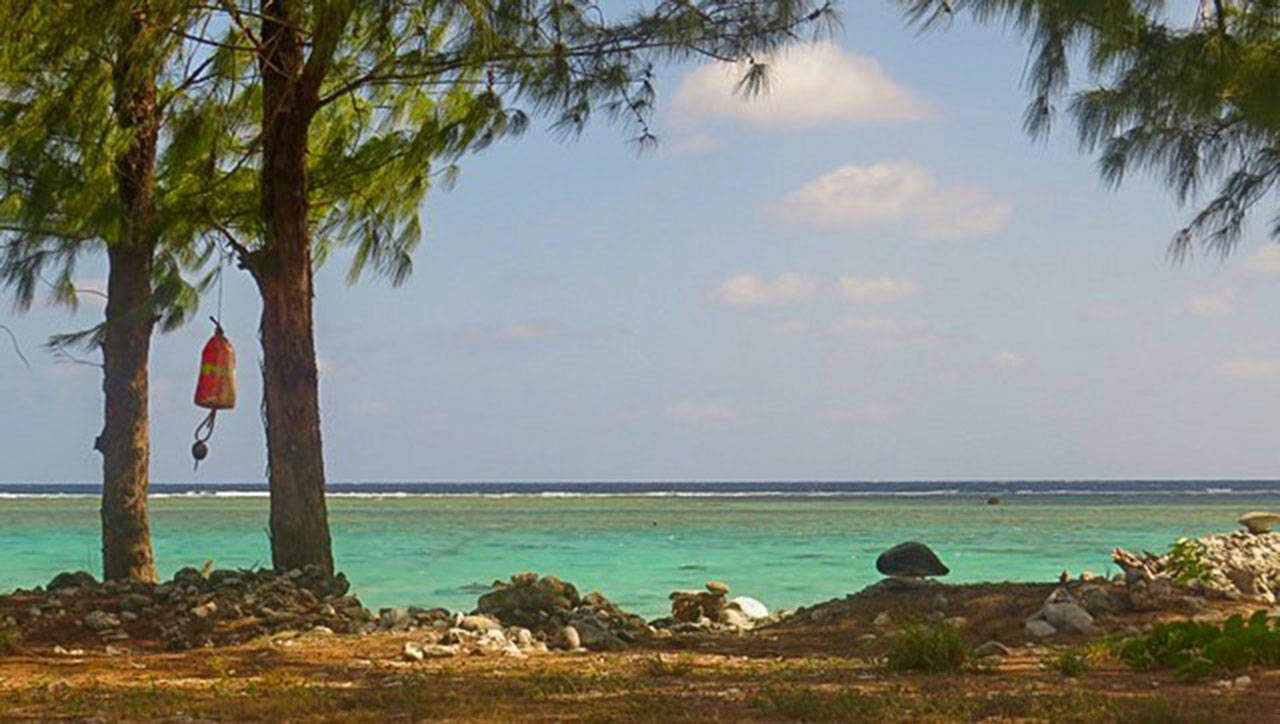Submitted by SeaDoc Society
SeaDoc Founding Director and Board Member Dr. Kirsten Gilardi received an email from out of the blue — from way out of the blue.
The message was from her brother-in-law, John Gilardi, who’d been out doing his quarterly survey of seabirds on Wake Island, a miniscule coral atoll that’s 2,300 miles west of Hawaii, 1,500 east of Guam, and 1,000 miles south of nowhere.
“I’d gone to the windward side of the island to count gray-backed terns,” says John, an ecologist who the islanders call Birdman. “They like to nest there amid the coral rubble thrown up by storms.”
Coral isn’t the only thing cast ashore by the wind and waves.
“That side of the atoll collects all kinds of flotsam, jetsam and other man-made debris,” says John. “I always keep an eye out hoping to find old Japanese glass fishing floats, but mostly it’s trash like bottles, buckets, cigarette lighters and shoes. The folks on Wake do cleanups every few months, but it just keeps coming.”
On this particular beach survey, John spotted a flash of color that turned out to be a modern fishing float. When he got closer, John noticed that the buoy still had its Washington Department of Fish &Wildlife commercial crab license tag attached.
“I thought, ‘I bet Kirsten would be interested in this!’”
The Washington crab float somehow navigated the great Pacific gyres on a three-and-a-half-year odyssey to a speck of land less than two square miles in area some 4,300 miles from the Salish Sea.
The float that went on walkabout all the way across the Pacific was originally attached to one of an estimated 14,000 commercial and recreational crab pots that are lost each year in Washington state waters.
The Washington Department of Fish &Wildlife runs a program in the state’s coastal waters that allows commercial crabbers to get a special WDFW permit and head out after the season to scour the Pacific coast for lost gear. The arrangement cleans the habitat and clears potential entanglement risks, and the benefit for the keen-eyed crabbers who recover gear is finders keepers. But the program doesn’t include the waters of the Salish Sea, where some 12,000 of those crab traps go missing every year.
Northwest Straits has already recovered 4,700 lost traps in Puget Sound. Recreational crabbers and shrimpers can do their part by making sure their traps don’t go missing in the first place by using enough weight to hold them in place, rigging more than enough sinking-type line to account for the depth, having proper biodegradable escape panels, and by not setting traps when the tides and currents are too extreme.
The gear recovery programs SeaDoc has been involved with in Washington and California are both huge successes and have become models for similar efforts around the world. Out on Wake Island, Gilardi hung that well-traveled crab float on a Casuarina tree as a symbol of our interconnectedness.
All the world’s oceans and seas share problems like marine debris and ghostfishing gear that kills wildlife and damages habitat. But by sharing solutions and supporting restoration efforts, we are making a difference.



